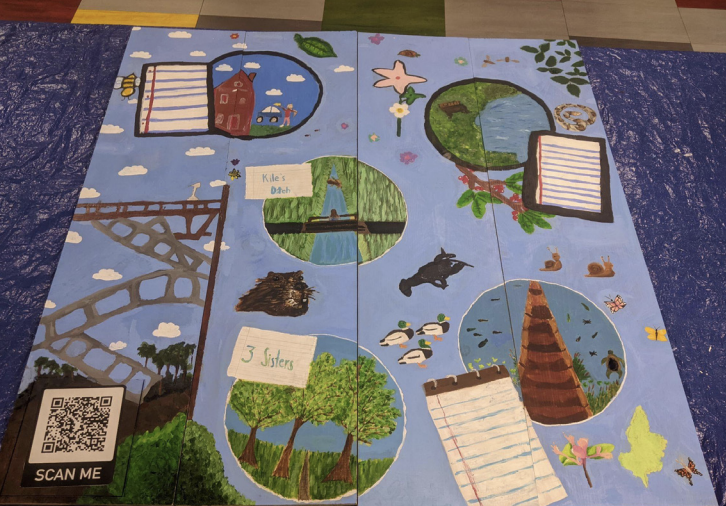
In the fall of 2021, the Ohio Wetlands Association (OWA) was awarded an OEEF mini grant for the implementation of a pilot project at St. Brigid of Kildare School that introduced authentic, place-based learning into the 7th grade around water quality issues our state is currently addressing through H2Ohio.

This module was cross curricular in nature and ‘included the subject areas of science, language arts, religion, and art. The module was based on Project WET and included 14 units in three of the subject areas; science, religion, and art, while simultaneously aligning to six state learning standards, four science and two language arts. A total of 40 students participated in the 7-week module that included science units on the hydrological cycle; ground and surface water; a hands-on stormwater workshop led by Linda Pettit from the Franklin Soil and Water Conservation District (FSWCD); macroinvertebrate sampling, led by Ray Stewart from the OWA; wetland ecology, a virtual wetland field trip created by USDA NRCS (viewable at https://www.youtube.com/ watch?v=pS-4Qk-mjJI), and associated concept map created by OWA as a field trip preview, and a field trip to a Honda Wetland Education Area at Glacier Ridge Metro Park, led by park naturalist Sara Segers; presentation by Alyssa Yaple, Ohio Department of Natural Resources, on their H2Ohio focus of wetland enhancement, restoration, and creation; H2Ohio agricultural best management and soil health presentation by Brother Nick Renner from St. Charles Seminary Farm; and GIS lessons including exploration of the “How’s My Waterway” application by Laura Manns from OWA.
The religion and art component also used Project WET for students to analyze their individual water footprint and for the creation of their final project. The language arts component was based on the book A Long Walk to Water by Linda Sue Park. In collaboration with the Metro Parks, an interactive wetland map was created by Josh Garver of the FSWCD for student use during the field trip with the goal of students leading a follow up family field trip. Nature photographer Jerry Guy generously allowed the use of some of his photography contained in the digital map. Students created a watershed mural with a focus on wetlands. The mural contains a digital interface that allows the school community to access more information about wetlands generally and Honda Wetland Education Area, specifically, through a QR code.
As part of the language arts unit, students decided that they wanted to raise enough funds to install a well in a village in Africa. Students held three separate fundraising events and raised a total of $1,610.35, providing a water well, pump, family wash Winter 2023 Page 3 station, and two hand washing stations through Catholic Relief Services. OWA applied for and was awarded a second grant to scale up this project. In the spring of 2023, five schools and a total of 575 students will participate in a range of content areas. The schools are located in Franklin, Lucas, and Putnam counties. Each school will be generating a final project, which they will either share with their school community or the larger community. An interactive wetland map will be created for Battelle Darby Wetlands through a second collaboration.